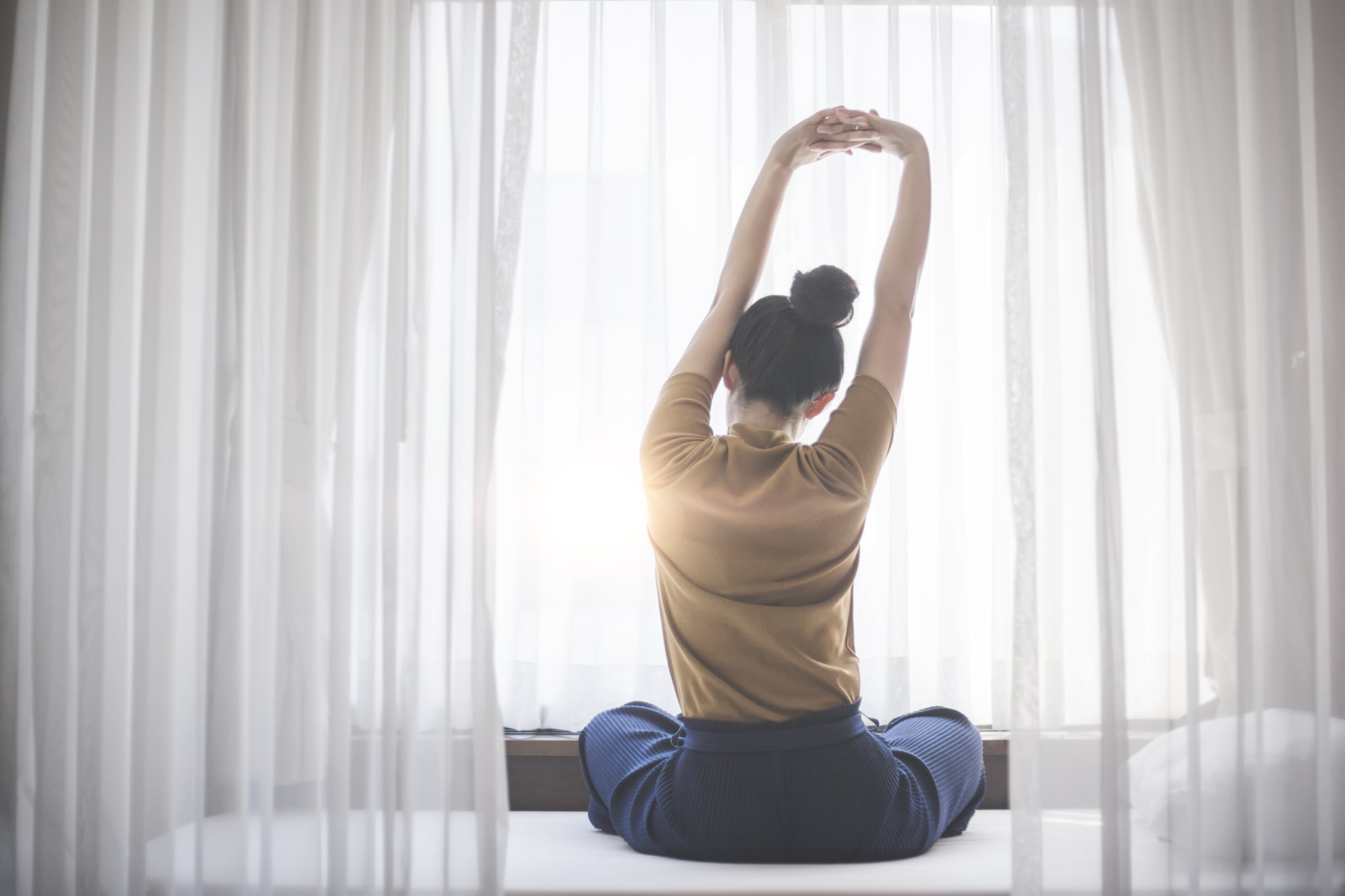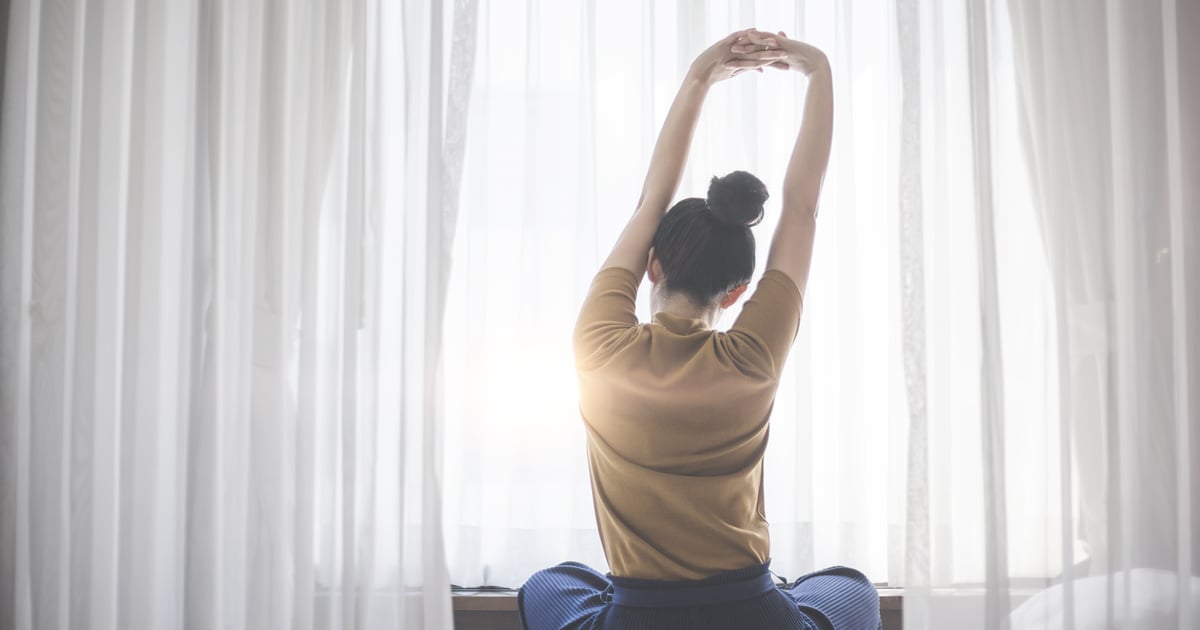Products You May Like

If you work a job that requires sitting at a desk (either at home or in an office) for the majority of the day, then you know the never-ending battle of lower-back pain. All it takes is a few days of sitting in a slightly off-kilter position, and boom — low-back pain for a week. Accidentally slip into a habit of having bad posture or slouching? You might be looking at a few weeks or months of back pain if untreated.
The intensity of the pain (and the length of time it hangs around) might vary, but one thing remains true: how you sit really does affect the health of your back, especially when you’re sitting for most of the day. Lower-back pain can happen from leaning too far forward or slouching back, from not giving your lower back enough support, or from placing your keyboard and mouse just a little too far away. The frustrating part is that a lot of the time, unhealthy sitting postures don’t even feel bad, at least not at first. “It’s very common to kind of slip into some of these positions because, at the time, they can feel super comfortable,” says Supreet Shah, DC, MS, CCSP, a chiropractor at TruSpine in San Francisco. But slumped or slouched posture can put a strain on your muscles and make it more difficult to activate them when you get up and start moving again, which is when pain in your lower back can occur.
It’s not always easy to tell when you’re slipping into sitting positions that can cause lower-back pain, but knowing how to spot them is the first step. From there, it’s a matter of tweaking your habits or desk setup — or both — to help you and your back find some relief.
Sitting Positions That Cause Low-Back Pain
There are two main types of slouching, and both can cause lower-back pain. The first is kyphosis, which occurs when you hunch your shoulders forward, causing your upper back to round, according to Dr. Shah. Lordosis is the opposite: an overarch in the spine, creating a large C shape in your lower back. “These two [positions] put extra pressure on the neck and the back,” Dr. Shah tells POPSUGAR. Added pressure can reduce blood supply to the muscles in your back, core, and abs, which can lead to “extra stiffness and weakness in certain parts of the body, like the lower back and the trunk,” he says.
The problem is that it’s not always easy to tell when you’re slipping into one of these slouching positions. On the more obvious end, stiffness and soreness in your lower back is usually a sign that you’ve started slouching and that your current or typical sitting position is not a good one. Sometimes, though, certain sitting postures can cause pain in other areas before triggering pain in your lower back. Here are some warning signs to look out for.
- Rounded shoulders. If you often sit with your shoulders rolled forward, it can first cause pain at the base of your neck, across your shoulders, or between your shoulder blades, Dr. Shah says.
- Hiked-up shoulders. It’s common to let your shoulders drift up toward your ears, which can lead to tightness and stiffness in your upper back. You also might find that one shoulder is lifted slightly higher than the other due to unequal use. “Most activities that are performed are generally like one-sided,” Dr. Shah explains, such as using a computer mouse or carrying a bag or backpack. “What you’ll notice is there’ll be a hiking of one of the shoulders . . . which can lead to pain at that part of the body.”
- Head dipping forward. Also known as tech neck, a forward head carriage puts extra pressure on your neck, Dr. Shah says. Every inch that your head tilts forward “is about 10 extra pounds of weight for the neck,” he adds. “That’s a lot of work for the neck to do over the course of a day.”
- Recurring tension headaches. You typically feel a tension headaches at the base of your skull or on one side of your head, Dr. Shah says. They can also feel like a tight band wrapping around your head. While tension headaches can be caused by a number things — including stress, anxiety, eye strain, and sleep deprivation — poor posture can also act as a trigger.
These postures and signs of slouching might not cause lower-back pain immediately, but over longer periods of time, they can lead to muscle strain that puts extra pressure on your lower back.
How to Sit When You Have Low-Back Pain
When you’re dealing with low-back pain, the fix isn’t always as simple as just sitting up straighter. There are a few things you can do to quickly relieve a flare-up of lower-back pain, but if the problem is more chronic, you may want to consider tweaks to your desk setup or incorporating stretches and standing breaks into your day.
Here are a few things you can do in the moment to find relief from acute lower-back pain.
- Ice the area. Inflammation could be worsening your discomfort, so Dr. Shah recommends placing an ice pack on areas of pain in your lower back. Keep it there for 10 to 20 minutes, followed by a break of about the same length of time, and repeat as necessary.
- Do a couple rounds of Cat-Cow. This yoga posture puts your low back through its full range of motion, which can help to “decompress the low back,” Dr. Shah says. Try a couple of rounds of the move or incorporate it into a gentle yoga flow.
- Stand up and walk around. Stiffness can occur when less blood reaches the muscles in your back and core, which can cause them to “turn off” and result in pain. Standing up from your seat and walking around, even for a few minutes, tells your muscles to stay activated, Dr. Shah says.
- Make an appointment with a doctor or chiropractor. If your lower-back pain is intense or debilitating, make an appointment with a doctor. You should also see a doctor if back pain occurs after a fall or injury or if it’s paired with bowel or bladder issues, leg weakness, or fever. These could be signs of serious health issues, such as sciatica or a kidney infection.
If you’re dealing with chronic lower-back pain, here are a few solutions to try.
- Assess your desk setup. Make sure your screen is at eye level and that your keyboard and mouse are close to your body and not too high or too low — you shouldn’t feel like you’re reaching or straining at all when using them. “Seat height is important as well,” Dr. Shah says. Make sure that the angle between your hips and torso is “a little bit more than 90 degrees,” he adds.
- Add a low-back support. Place a rolled-up towel or blanket behind your lower back to provide extra support, especially if you have a tendency to round your low back.
- Stretch the area. In addition to yoga and stretches like Cat-Cow, Dr. Shah recommends trying a shoulder stretch if you find your upper back hunching forward. Bring your shoulders up toward your ears while keeping your arms by your sides, palms facing forward. Roll your shoulders back down your back to reset them and ease tension.
- Use a foam roller. Five to 10 minutes of foam rolling can serve as a nice self-massage for your back and the supporting muscles in your legs. Dr. Shah recommends placing the foam roller horizontally on the ground, lying on top of it, and running it along your upper back, glutes, and hamstrings. You can also turn the foam roller lengthwise and lie down on top of it, with the roller right along your spine. Stretch your arms out to the sides to open up your chest muscles, which have a tendency to cave in and contribute to slouching when you’re working at a desk.
- Make an appointment with a doctor or chiropractor. Seeking professional help isn’t only reserved for intense flare-ups. If your lower-back pain doesn’t go away after a few weeks of trying these strategies, or if it gets worse, call a doctor or a chiropractor and make an appointment to receive individualized treatment.
